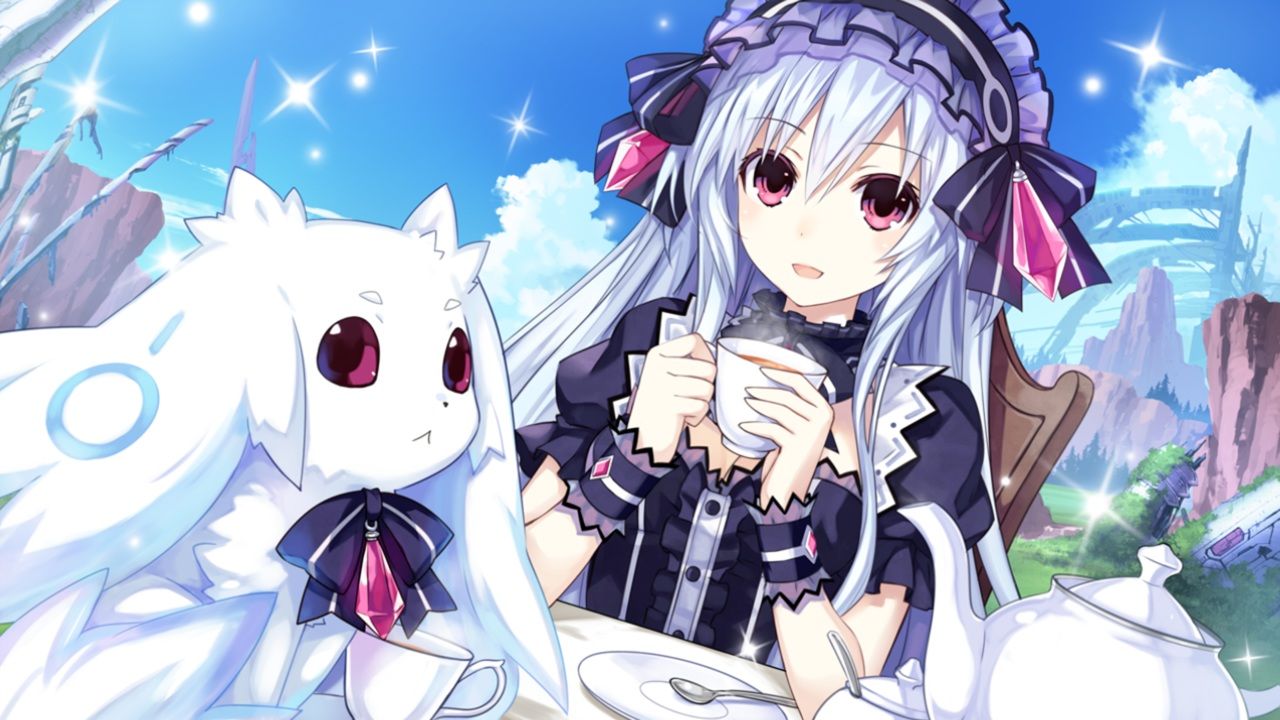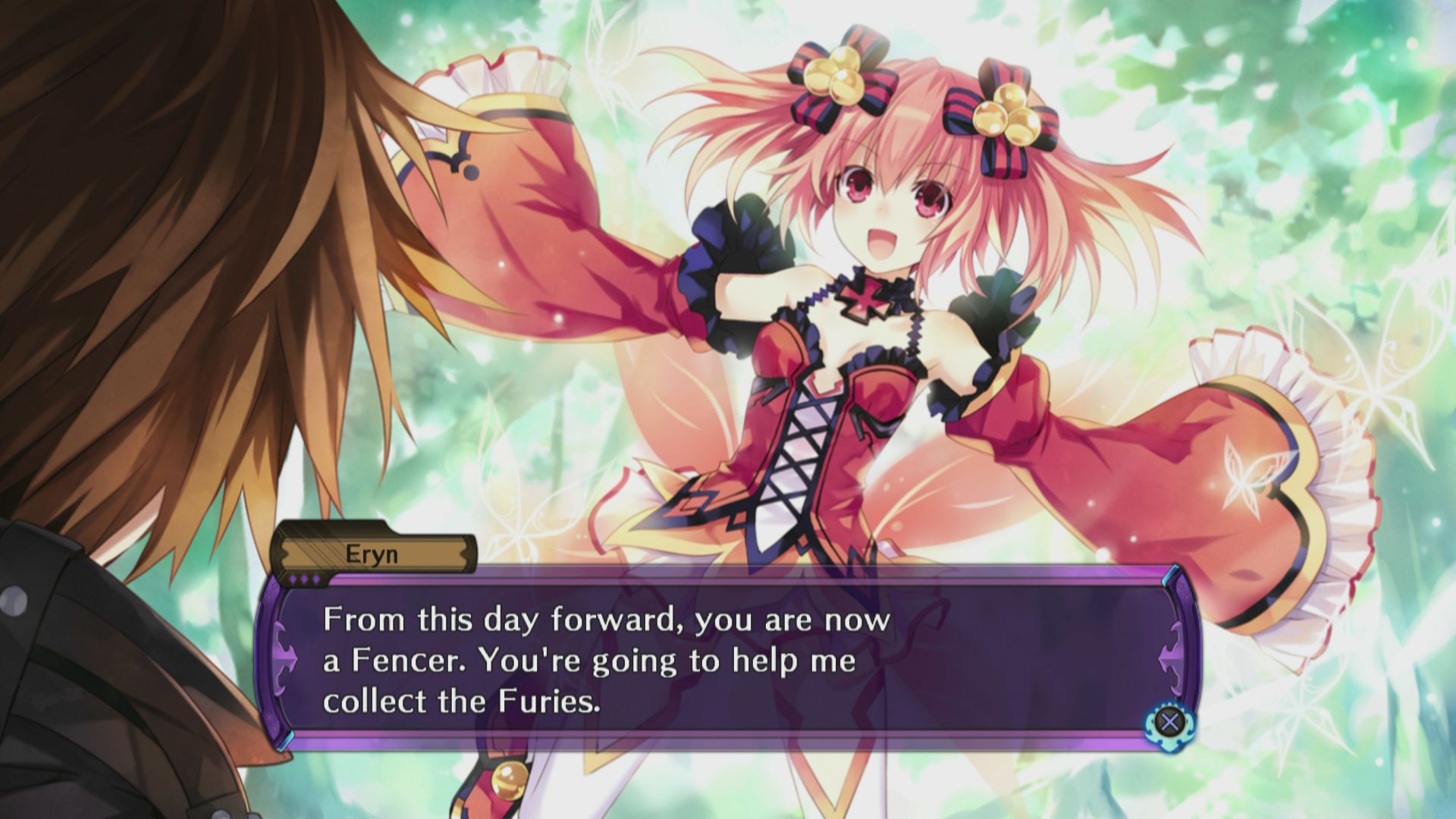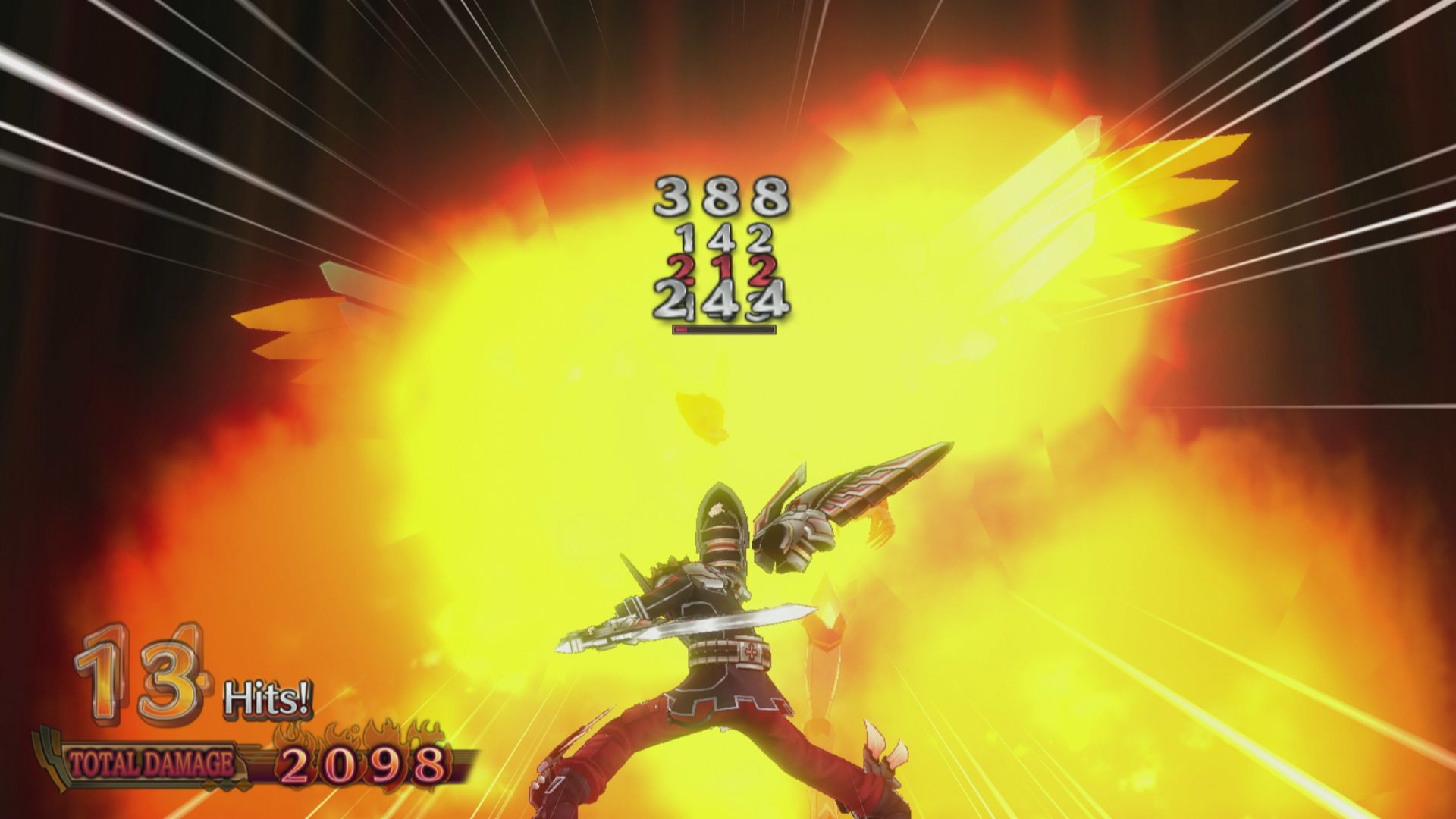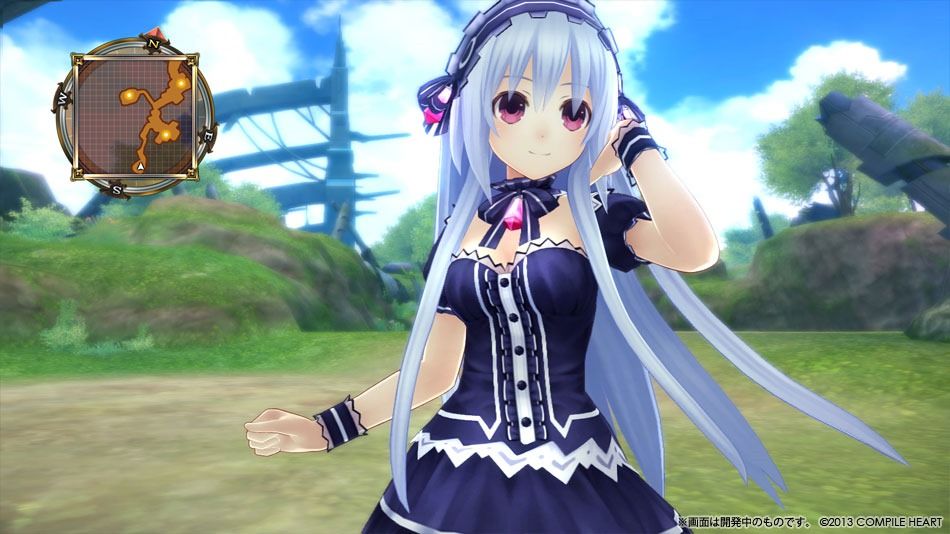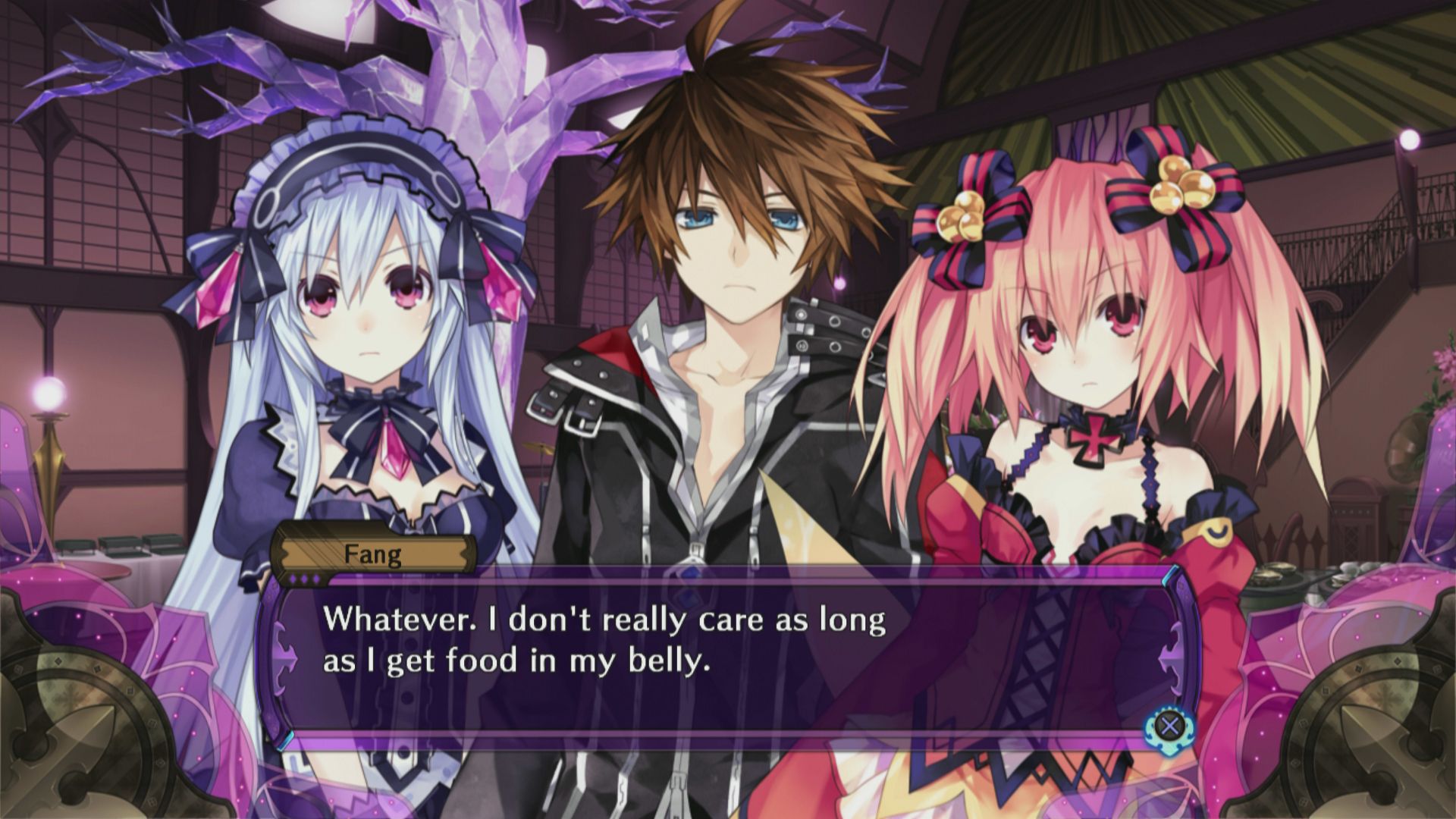Fairy Fencer F is the latest in a string of PS3 exclusive RPGs to come out of Japan. The Hyperdimension Neptunia and Record of Agarest War developer Compile Heart has stuck to its strong suit with yet another JRPG, but does it do anything to help it stand out from the crowd?
As its name implies the game revolves around fairies -- powerful entities that reside in weapon-like prisons known as furies -- and fencers, which are special individuals capable of wielding furies and bonding with fairies.
Some time before the events in the game, the benevolent Goddess and sinister Vile God were locked in a war with one another. In the fight both deities summoned several furies in an attempt to defeat the other, but the battle ended in a stalemate that left them both sealed. The furies from the leftover attack then fell down to the mortal world. The adventure begins when Fang, a selfish, lazy and generally irritating kid, chances upon a fury containing the fairy Eryn. The events following the encounter lead to Fang begrudgingly embarking on a quest to revive the Goddess.
Although there are clichés abound and I found it at times difficult to care one way or another, the game’s story is fairly interesting and it is certainly something I think will keep shonen manga fans entertained. Along for the adventure is a mostly agreeable cast of characters and many of their interactions with each other are entertaining. Much of the dialogue in the game hinges on humor and fan service. I’m not kidding: there’s a scene where a heavy-breasted party member complains about being hot and the very next scene is artwork of her undressing. The game is blatantly, unapologetically Japanese, so if you’re into that kind of thing you’ll definitely want to check it out.
When it comes to presentation, Fairy Fencer F is a bit of a mixed bag. The appealing character designs are highlighted by the game’s lovely artwork. Most story scenes in the game happen in a visual novel style, in which you’re shown relatively static character illustrations while conversations and events take place, although there are just a few 3D scenes as well. These illustrations are crisp, sharp and nice to look at.
While I’m at, the game’s HUD and navigational elements are also quite sharp and appealing. The menus and portraits are surprisingly clean as well. The game is generally very colorful and the heavy anime influence is clear.
Unfortunately, not everything in the package is as well done as the artwork and menus. The character, enemy models and environments are ugly, drab and incredibly dated. When you set out for the first time you might be genuinely stunned by the lack of visual quality. The environments in particular are just poorly done, there’s no other way to put it. They are straightforward, boring and hideous. There’s no doubt in my mind that some areas could be identically rendered on the PlayStation 2.
In addition to poor graphics, I found the game’s soundtrack to be quite bad. The exploring themes are bland and uninspired and the arcade-like, synth heavy battle themes are generic and grating. The music isn’t so bad that it’s unbearable or anything, but it’s simply so flat and generic that it’s irritating. The default English dub seemed decent for the brief moment that I used it, but the game includes both English and Japanese voice options and I played with Japanese voices. As per usual, the Japanese voices bring the characters to life with lots of expression and drama where needed.
The game makes some amends for its technical shortcomings with relative depth of gameplay and variety of interesting systems. Combat is turn-based and you can move characters around the field during their turn before taking an action to better position them. When attacking with a weapon, you’ll need to hit buttons corresponding to certain combo attacks, which is slightly reminiscent of the PSOne RPG Legend of Legaia.
Attacking, using magic and so on works as you’d expect it to, but the game spruces things up with the “Fairize” action, which basically evolves the form of a character’s fury. This occurs with a very Japanese “transformation scene” which also changes the music. You can skip the scene but the music still changes and several hours into the game I’d gotten extremely tired of the whole process; you definitely need the damage boost that comes with Fairizing.
Once in this powered up state, your characters gain access to flashier, much more powerful attacks. Their regular attacks also become so powerful that the mode even feels a bit cheap at times. You can equip characters with different kinds of weapons to spice things up. For example, although Fang wields Eryn as a sword in the beginning, you can change her to knuckles or other weapons as the game progresses. As you defeat enemies the characters will accrue weapon points (WP) which can be used to unlock new magic spells, combo attacks and abilities.
WP can also be used to increase different parameters of the characters, such as increased physical attack or attack range. In addition to their main fairy (the one housed in their furies), each character can also equip an additional fairy. These fairies, which also have some lovely illustrations, do different things such as modifying stats or granting new abilities.
You can of course equip characters with armor and accessories to strengthen them up, but the changes are not visually depicted on the character models. However, you can customize your characters appearance with different costume pieces you’ll find throughout the game. These are typically minor things like bunny ears or small angel wings, but there are apparently full costumes to discover. All of these things combine to offer quite a bit of freedom and complexity to building your party.
You can synthesize items dropped by enemies and found in the environment into useful consumables. In the town, you can accept quests to earn additional money and experience.
World shaping is a feature thrown in presumably to give dungeon hopping a twist. Before you can visit a new area in Fairy Fencer F you need to “unlock it” on the map by means of stabbing a fury into it. What’s interesting is that the fury you use will add different effects to the dungeon. One fury may grant an experience bonus while you’re exploring the dungeon or another may give an attack boost. Unfortunately all of the bonuses also come with some sort of nasty debuff which took away most of the fun of world shaping for me.
When it gets going and into its stride, Fairy Fencer F is a pretty fun JRPG. The solid combat and over the top attack animations, lovely character designs and artwork, quirky cast of characters and decent gameplay depth should be enough to keep genre fans entertained. The experience is mired by gaping shortcomings in both the graphical and audio departments, but it is still one that I think JRPG fans will enjoy. This title fails to raise any bars, but taken for what it is the game certainly has quite a bit to offer.

